Place d'Armes and the Government House
Tags : Landmark
Timings : All Day
Time Required : 1-2 hours
Entry Fee : No entry fee
Place d'Armes and the Government House, Mauritius Overview
Considered as a jewel of the Mauritian heritage, the Place d'Armes is undoubtedly the most iconic place of the island. It stretches from the Hotel du Gouvernement all the way up to the Port Louis Waterfront. The road lined with royal palms leads to the beautiful French Colonial structure - the Government House - that dates back to 1738. Also famous by the name Sookdeo Bissoondoyal Square, Place d'Armes is the place where you can find the statues of some of the great personalities who contributed, in one way or the other, to the long and rich history of Mauritius; the buildings present in the area also reflect the deep-rooted history. Place d'Armes and the Government House are counted among the world-known monuments and sites and is a National Heritage for Mauritius as well.
Place d'Armes stands as a historic entrance for the city of Port Louis. Apart from the century-old palm trees, there statues found here is what accounts for its worldly reputation - statues of famous men, and a woman.

Source
Read More on Place d'Armes and the Government House
Things to See
Statues
The first that you get to see after entering Port Louis from the south highway is the statue of Mahe de Labourdonnais. The location of the statue was once known as the Place du Quai. The statue is a way of paying tribute to the real founder of the colony - the one who was responsible for the significant progress in the construction of the port, for laying the foundations of the city, for doing a lot of the infrastructural work and for developing the agricultural and sugar field. The statue was made out of bronze by the French sculptor A. Dumont and was inaugurated on 30th August 1859.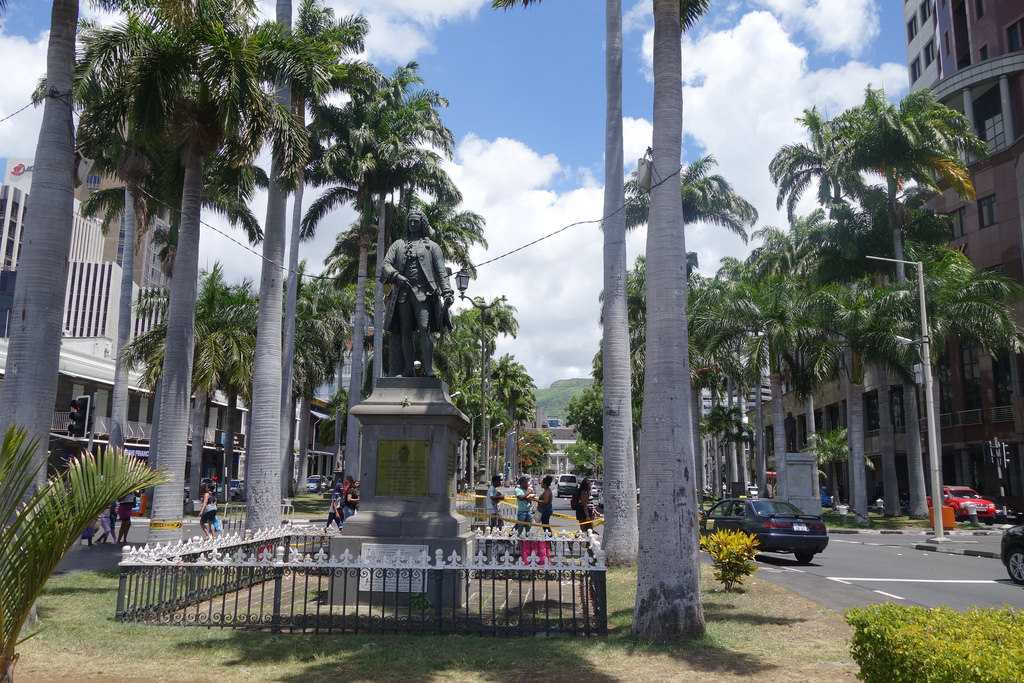
Source
You can find the statue of Queen Victoria at the other end of the square. She was crowned as the Queen of the United Kingdom on 20th June 1837, and soon her rule became the second longest British monarchy. Her reign was marked by the vast expansion of the British Empire and all the countries under her control, including Mauritius.
Right behind Queen Victoria, you will find the statue of Sir W. Stevenson in the Court of the Government House. The statue was made by the Mauritian sculptor Prosper D’Epinay and raised on 21st June 1867. Sir W. Steven was appointed as the Governor of Mauritius in 1857, and he worked sincerely towards improving the quarantine conditions by starting an orphanage for the Indian children and expressed his concern over the immigration system.
The number of government schools increased under his governance and problems regarding the rail network connecting Port Louis to different parts of the island got resolved as well. He also expanded the docks of Port Louis, ordered the construction of the Municipal Canal and it was he, who erected the statue of Mahe de Labourdonnais on the Place du Quai.
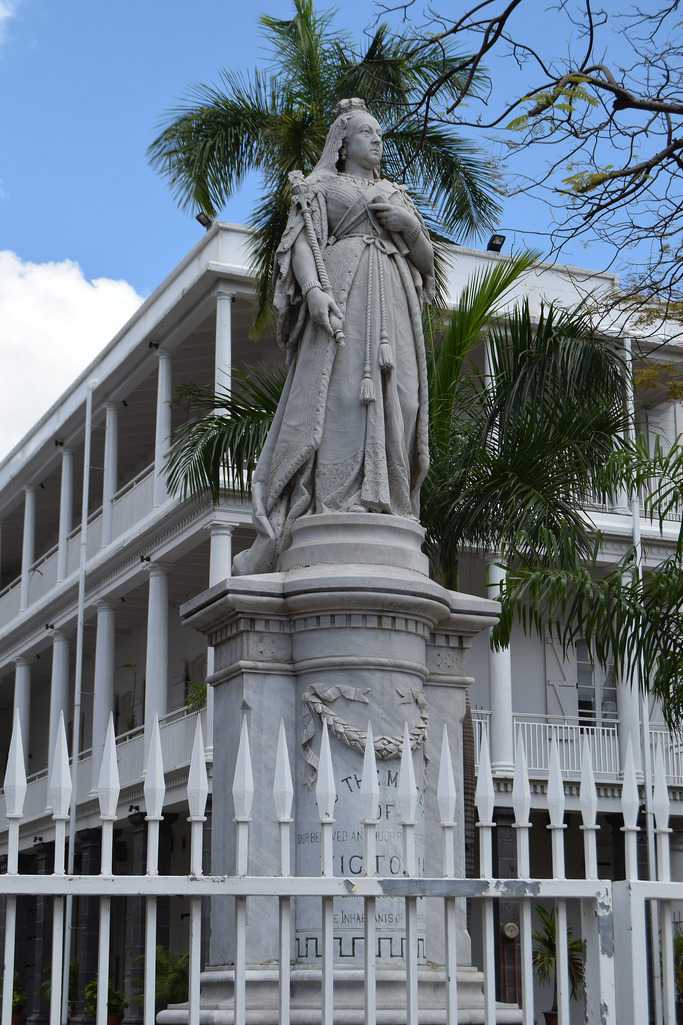
Source
Up next, the statue of Sir John Pope Hennessy stands right opposite to that of Queen Victoria. Mauritian sculptor Maurice Loumeau created the statue, and it was raised on 22nd December 1908 formerly in a place called Place du Theatre Municipale. The statue was later transferred to Place d'Armes on 11th July 1929. He was reputed as the most famous British Governors of the colony and was well known for his “Mauritius for the Mauritians” policy.
The statue of Sir William Newton is along with that of Pope Hennessy. Sir Newton was a brilliant lawyer of the Mauritian Bar during that time. Besides being a perfect friend and collaborator of Governor Pope Hennessy, he was also the Leader of the reforming movement and was appointed as the legal adviser to the Chamber of Agriculture and later he joined the Council of the Government. As the Leader of the reforming movement, Sir Newton made his contributions towards establishing the first democracy in Mauritius by introducing an open electoral system that allowed not only the English officers but also the settlers, property owners and Indo Mauritians to participate in the election. His statue has been standing since 27th September 1922.
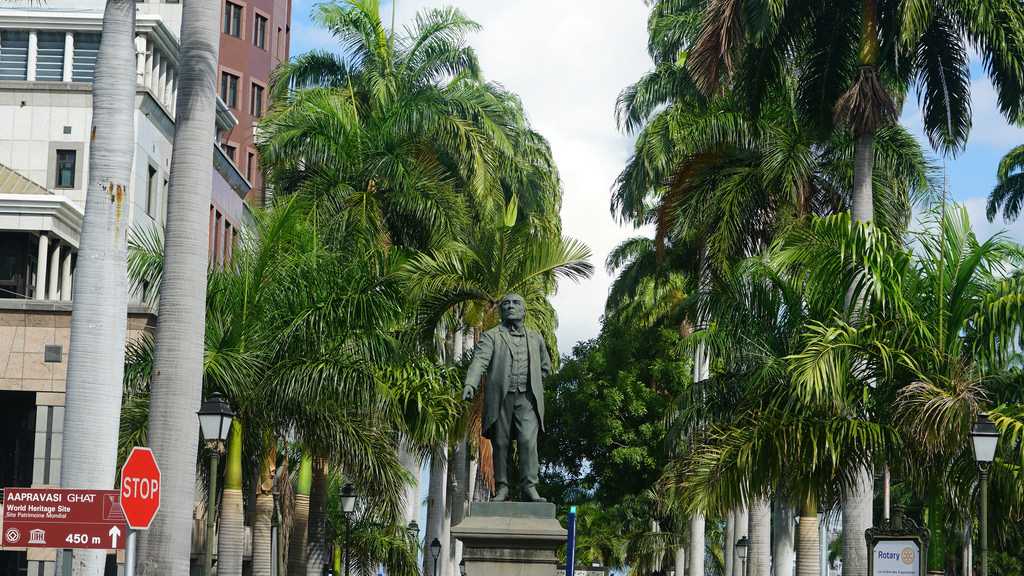
Source
The statue of Sir Seewoosagur Ramgoolam stands on the esplanade facing the Plaza de Armas. He was the Prime Minister of Mauritius from 1961 to 1982 and was considered the “Father of the Nation”. Mauritius gained independence from the United Kingdom under his mandate in 1968. Queen Elizabeth appointed him as the Governor General of Mauritius in 1983, and he resumed in this post until his death on 15th December 1985.
All these statues are classified as National Heritage. Apart from that, Place d'Armes is also home to the statues of several statues of other Mauritian politicians. There are also various other monuments in Place d'Armes that are classified as National Heritage.
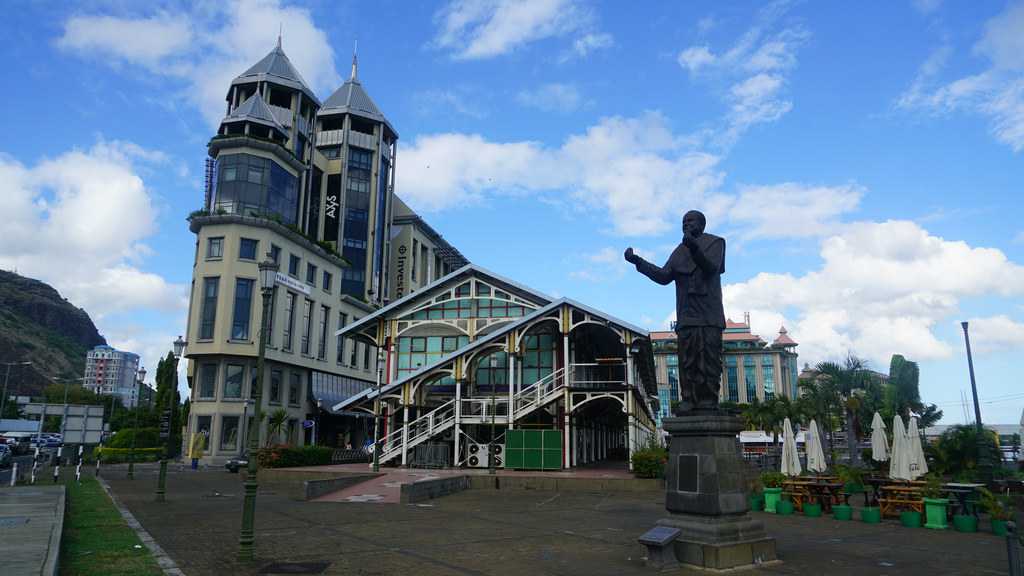
Source
Monuments
The Hotel du Gouvernement is an imposing building in Place d'Armes, and it was classified as a National Heritage in September 1968. The first Government House of the French colonisation period was initially built of wood in 1725. However, it was destroyed by a cyclone on 23rd December 1727. Governor Mahe de Labourdonnais transformed the building in 1738 by rebuilding it with stone and adding a floor along with galleries in the two front wings and two wings in the back of the building. Similarly, the second floor of the building was initially built of wood in 1807 at the request of General Decaen. It was later transformed into a large room and served as a hall on the left wing towards the back of the building. With great luck, the build somehow managed to escape the great fire of Port Louis in 1816. Since 1875, the Legislative Council gather there for meetings, and it shelters a crucial part of the National Assembly. The second floor of the left wing caught fire in 2006 and today, the restored and brand new avatar of the building is widely popular in Port Louis.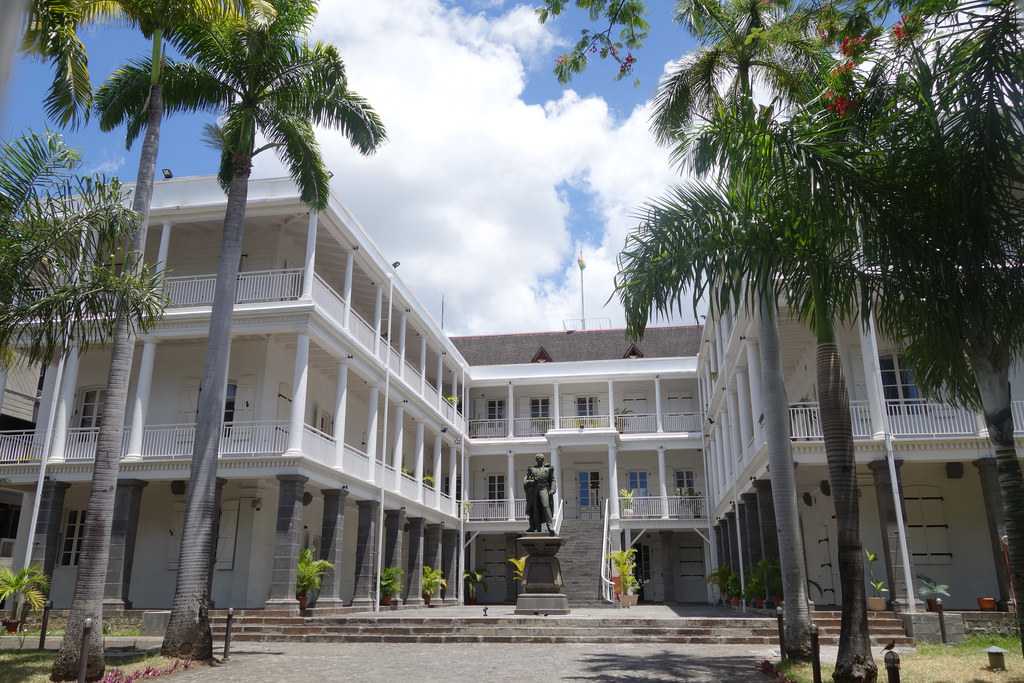
Source
Just a few yards away from the Hotel du Gouvernement, you can find the Treasury Building. It is on the corner of La Chaussee and Intedance streets and can be easily accessed from Place d'Armes. The building was made of stone, wood, and covered with metal sheets and shingles, between 1883 and 1889 and was classified as a National Heritage in June 1978. Initially, the building was used by the Ministry of Labour and then by the State Commercial Bank. Mainly it was used by the Treasury, but at the present day, it serves as the office of the Prime Minister.
Right opposite to the Treasury building is the former headquarters of the Mercantile Bank, which is in currently Hong Kong and Shanghai. It was built around 1859 and was classified as a National Heritage in 1978. The building reflects the rich history of banks in Mauritius and their importance in the development of the plantation economy.
Alongside Place d'Armes, you can find the historic seat of Ireland Blyth at Dr Ferriere Street that was classified as a National Heritage in 1989. The street also houses the offices of the Consulate of the Kingdom of Belgium and the Netherlands. It is separated from Place d'Armes by Bowen Square, which is a small garden that was classified in 1989 as well. The entire landscape is beautifully designed, and it serves as a resting place for the residents and visitors to Port Louis.
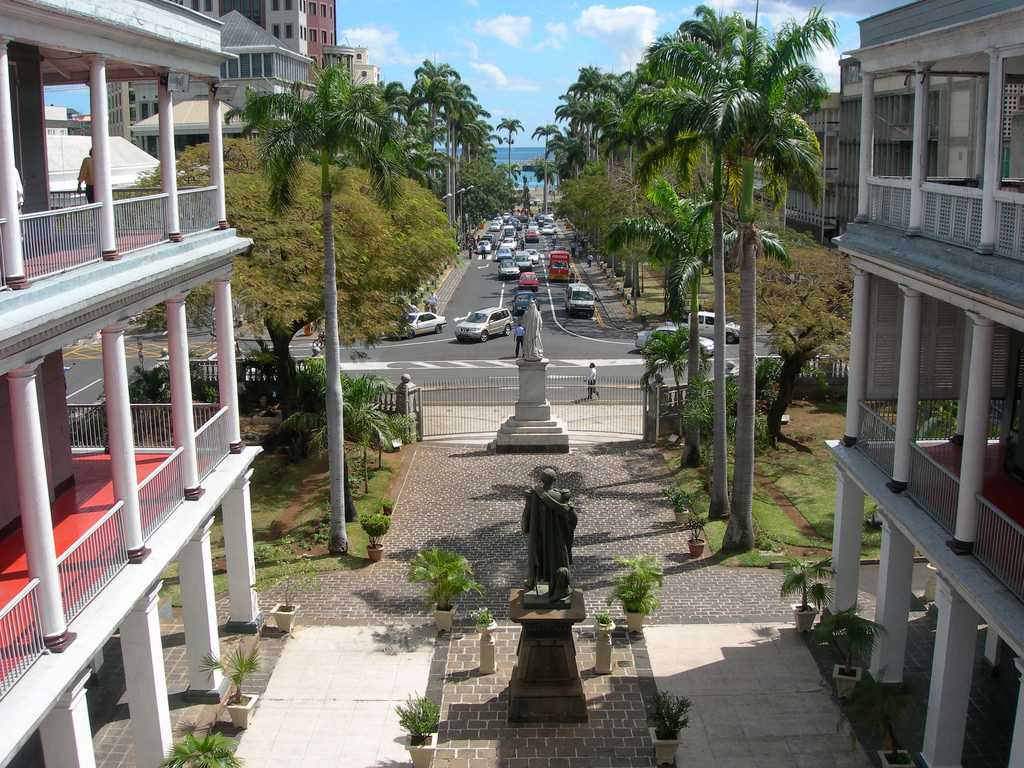
Source
Last but not the least, the Drinker situated at the foot of the tower of the State Bank of Mauritius. The structure is topped on a wall with a horse’s head on it. It served as a drinking water source for the animals on their arrival to Port Louis. There also used to a bakery behind the wall back at that time. The monument is classified as a National Heritage too.